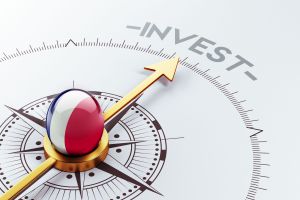ОП-ЕД: ЗОШТО СВЕТОТ ТРЕБА ДА СЕ СЛЕДИ CHINAANDINVESTINAFRICA262382173BSFUTURE
ХендрикдуТоит, co-CEO of Investec Group argues African economies have been resilient and the continent’s long-term growth story – particularly green growth – remains compelling to invest in Africa.
By Hendrik du Toit is co-CEO of Investec Group
I remember a time, над 20 years ago now, кога виртуелно непрофесионално управуван капитал се пресели преку граница во Африка. When aid and corruption drove the investment narrative. When Africa was called the “безнадежен континентE2809D. When sustainability wasn’t even part of an investor’s vocabulary. We’ve come a long way.
The millennium heralded rapid growth across the African continent. At around 3%, стандардната стапка на африканската инфраструктура е една од најниските во светот. Africa has the fastest growing population and is seeing a wave of innovation and entrepreneurship sweeping across the continent. The latter is strongly enabled by mobile phone technology which has directly facilitated a financing revolution. Инсталацијата за соларен панел надвор од мрежата се пролиферираше, купени преку месечни плаќања направени на мобилни телефони, through companies like Mobisol and M-Kopa.
Секако, глобални и домашни настани, вклучувајќи го и 2014 нафта-цена шокхитголема економичност особено тешко; weE28099 видовме неодамнешни падови во перформансите во Ангола, Нигерија, and my home country of South Africa. But overall, African economies have been resilient and the continent’s long-term growth story – particularly green growth – remains compelling.
Милијарди долари се инвестирани во обновлива енергија низ целиот континент. Последната година, Нигерија издадена N10,69 милијарди (2429 милиони САД) зелена обврзница to fund local solar and forestry projects. This is Africa’s first sovereign green bond – one of only a handful in the world (заедно со Кина, Франција, Полска, Фиџи и Индонезија). Kenya will soon follow.
На Светска банка also estimates that aggregate growth in Sub-Saharan Africa for 2018 волјата 3.2%, нагоре од 2.4% минатата година. The continent is expected to host six of the 10-fastest growing economies of the world in 2018, додека традиционалните средства неуправување (вклучувајќи пензиски и заеднички фондови) are forecast to grow to around US$1.1 trillion by 2020, up from US$634billion in 2014.
Накратко, AfricaisverymuchE2809CopenforbusinessE2809D, particularly for investors who are chasing yield and diversification. China’s got the message, committing to US$60 billion in new investment in major capital projects across Africa. Indeed, Кина е составен дел на АфрикаE28099 подмладување со тоа што ќе стане АфрикаE28099најголема дестинација за извоз, нејзиниот најголем извор на увоз и во поново време неговиот најголем извор на капитал, и капитал и долг.
Овие се позитивни сигнали, but a lot more capital is still needed, особено од големите институционални инвеститори. Estimates put the Африканската инфраструктура има дефицит околу 2490 милијарди САД every year for the next decade. Across the continent, 620 million people still don’t have electricity; 319 million people are living without access to reliable drinking water; and only 34% have road access.
There are a few things which can help. Firstly, “blending” public and private capital can improve an asset’s risk-return profile, so vehicles which use development money to mitigate investor risks can attract much needed commercial investment. Some of these vehicles – like The Currency Exchange, which offers FX hedging in emerging markets – have successfully mobilised billions of dollars of private money for African projects.
Another example is the Фонд за развој на африканската инфраструктура (EAIF) with projects ranging from water supply in Rwanda to solar power in Uganda. The EAIF is part of the Private Infrastructure Development Group (рамноправност од владите вклучително и ОК, Шведска, Германија и Холандија) and recently announced that it had го привлече првиот комерцијален заемодавец глобален осигурител Алијанц, as part of a $385 million fund-raising round. This investment signals a shift in appetite for African risk from institutional investors. These vehicles need to be scaled and replicated.
Secondly, to attract investment for high-impact assets like climate-resilient, sustainable infrastructure, development banks need to be more effective at crowding во private capital using instruments like political risk insurance and guarantees, not crowding them out. At best, на multilateral development banks (MDBs) mobilise less than $1 of private capital for every public dollar across their portfolios. They should target much higher mobilisation ratios and sharply increase their share of private sector activities (which currently only account for around 30% of MDB activities).
Thirdly, frontier countries must compete for investor dollars by making it easier for the private sector to do business. This requires strong, political leadership, depth in local capital markets, the right legal framework and transparent policies. In particular, local policies should support regional simplicity to facilitate cross-border operations that can generate scale. На пример, a very important, but much-overlooked regulatory amendment recently saw the amount that South African retirement funds could invest into the rest of Africa increase from 5% до 10%. It’s only when public markets are deep enough for strong exits that we’ll see bigger and bigger deals happening.
Most importantly, if we really want to see sustainable growth and the associated economic and financial returns, инвестициската заедница треба да украде. We need to take a leaf out of China’s book, опфаќајќи ја африканската инфраструктура и инвестициска можност, земајќи ги предностите на алатките за ублажување на огнот и решавањето на големата перцепција на ризикот помеѓу новите и развиените пазари. Ние можеме да имаме наша инвестициска моќ за движечка вредност за акционерите додека се приоритизираатE2809CGreenE2809D, одржлив развој (на пр. through initiatives like ClimateAction 100+).
This is all part of how we move away from an “aid-based” narrative to one of business and investment. It is also how we can provide the platform for economic inclusion of the world’s most youthful and fastest growing labour force. I dream of a future shaped by bold and wise investment decisions.
ИЗВОР: CNBCA Африка

